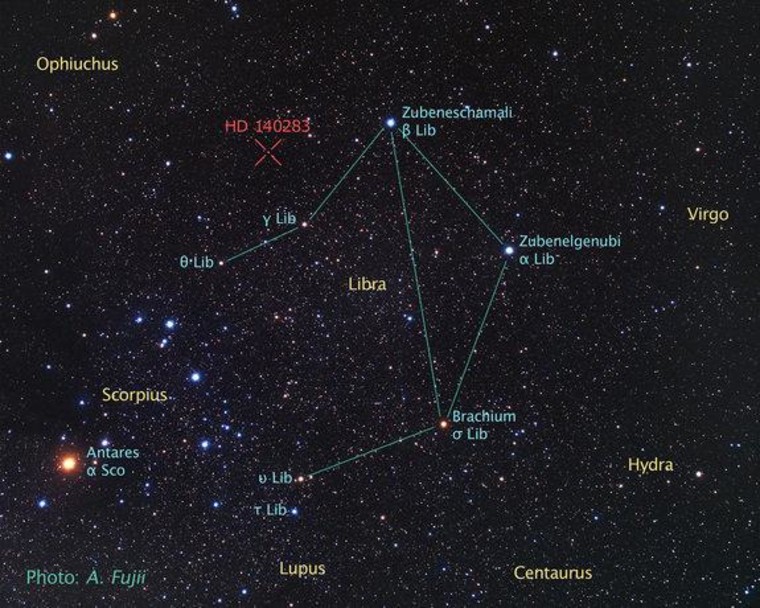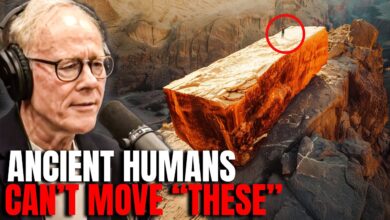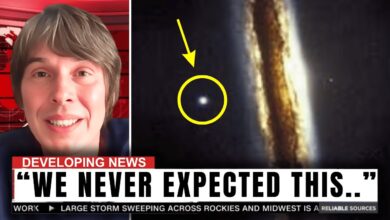This Star Is Older Than The Universe and Scientists Can’t Explain It

HD 140283, commonly known as Methuselah’s Star, is one of the oldest stars ever discovered and has been a big mystery to astronomers for many years. The star is located in the constellation Libra and is about 190 light years away from Earth. Although the size and brightness of HD 140283 are not special, its age has surprised scientists and raised big questions about our current understanding of the universe.
### 1. **History of discovery and initial challenges **
HD 140283 has been known for quite a while, but it was only in the 2000s that scientists began to pay close attention to it when they conducted detailed studies on the age of this star. Based on initial observations and analysis of its chemical composition, researchers have estimated that HD 140283 is about 16 billion years old. However, according to the widely accepted Big Bang theory, the universe is only about 13.8 billion years old. This leads to a major paradox: how can a star be older than the universe it exists in?
This 16 billion-year age exceeds all previous hypotheses and calculations about the universe, forcing scientists to reconsider many aspects of the methods used to calculate the age of stars. In particular, the techniques used to determine the age of stars are based on indicators such as the luminosity rate and the amount of heavy elements, thereby inferring the time of its formation. As a result, this star has become a difficult “knot” to untangle in affirming modern cosmological theories.

### 2. **Chemical composition and its significance**
HD 140283 has very few heavy elements, an extremely important feature that helps scientists determine that this star formed in the early period of the universe, when there were almost only light elements such as hydrogen and helium. During the evolution of the universe, heavier elements (such as iron, carbon) only formed after many generations of stars exploded as supernovae, creating a complex chemical cycle. The lack of heavy elements in HD 140283 indicates that it was formed shortly after the Big Bang, making it an extremely valuable “witness” to the early stages of the universe.
### 3. **Measurements and Age Revisions**
After discovering the anomaly in HD 140283’s age, scientists continued to study and analyze the data using a variety of modern tools, including the Hubble Space Telescope. Measurement methods were refined to ensure greater precision, such as using parallax measurements, which help determine the exact distance to the star, thereby improving estimates of its brightness and age.
After years of reanalyzing the data and adjusting factors in the calculation equation, researchers came up with a new figure for HD 140283’s age: about 12 billion years. Although still very old, this figure is more consistent with current cosmological models, and no longer conflicts with the estimated age of the universe (13.8 billion years). This means that Methuselah is no longer beyond the age limit of the universe as originally calculated, but is still considered one of the oldest stars known.
### 4. **The importance of HD 140283 in cosmological research**
Although HD 140283’s age has been revised and no longer challenges the Big Bang theory, it still provides valuable lessons for scientists. This star shows how quickly stars formed in the early universe, and helps us understand more about the chemical evolution of stars and galaxies. Stars like HD 140283 can provide information about the distribution of elements in the early universe and help scientists build more detailed models of the formation and evolution of celestial bodies.
### 5. **Conclusion**
The Methuselah Star is not only a scientific mystery, but also a “living witness” to the early universe. Although the initial challenges regarding its age have been partially resolved, HD 140283 still plays an important role in cosmological research. It provides astronomers with insights into how stars form, evolve, and grow over billions of years, opening up new questions about the history of the universe and its early stages.








